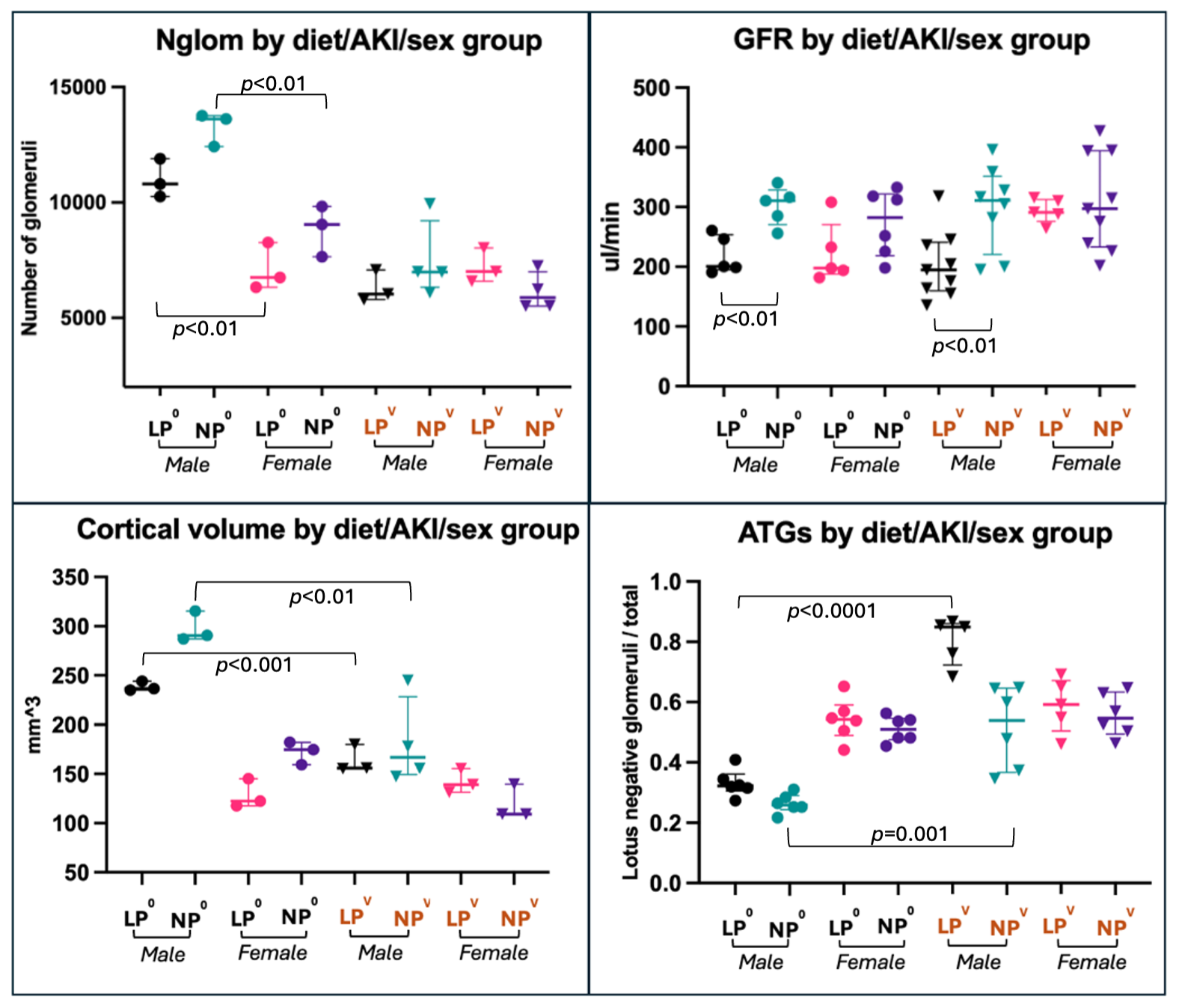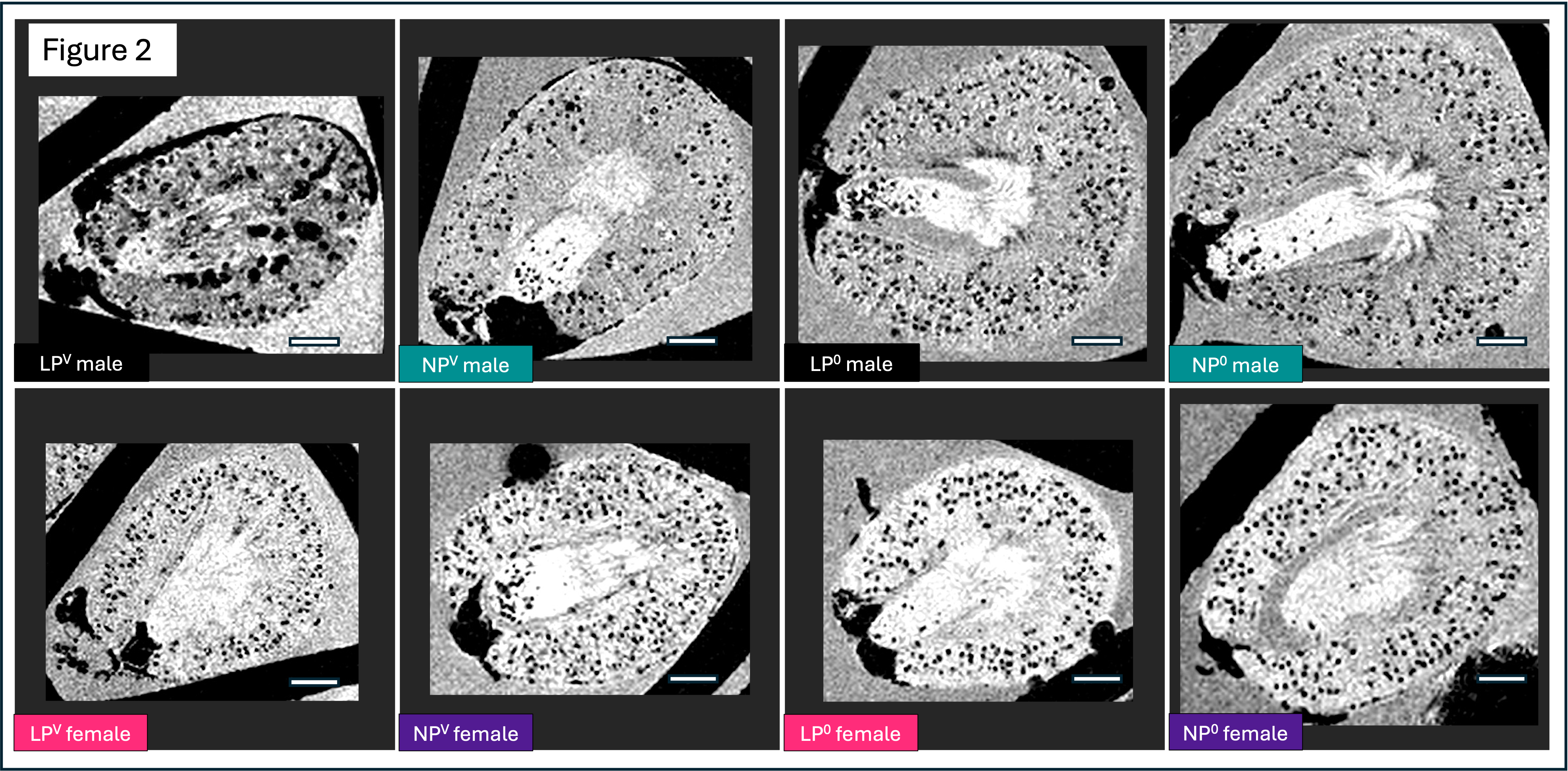Neonatal Nephrology/AKI 1
Session: Neonatal Nephrology/AKI 1
008 - Low birthweight and male sex are risk factors for nephron loss in mouse model of nephrotoxic acute kidney injury
Saturday, April 26, 2025
2:30pm - 4:45pm HST
Publication Number: 8.5640
Sage Timberline, University of Virginia, Charlottesville, VA, United States; Kimberly deRonde, University of Virginia School of Medicine, Charlottesville, VA, United States; Teng Li, Arizona State University, TEMPE, AZ, United States; Rachel K. Dailey, University of Virginia School of Medicine, Gloucester, MA, United States; Logan Hamil, UVA Childrens, Charlottesville, VA, United States; Aleksandra Cwiek, University of Virginia, Charlottesville, VA, United States; Teresa Wu, Arizona State University, Tempe, AZ, United States; Kevin Bennett, Washington University in St. Louis School of Medicine, St. Louis, MO, United States; Jennifer R Charlton, University of Virginia School of Medicine, charlottesville, VA, United States
- ST
Sage Timberline, MD
Fellow
University of Virginia
Charlottesville, Virginia, United States
Presenting Author(s)
Background: Low birthweight is a risk factor for chronic kidney disease (CKD). However, little is known about how acute kidney injury (AKI) in those born low birthweight affects the progression to CKD. Here, we investigate childhood AKI in a mouse model of low birthweight using vancomycin, a commonly prescribed antibiotic and a frequent cause of AKI in children.
Objective: To determine the impact of childhood vancomycin-induced AKI on adult kidney morphology and function in mice exposed to a low protein maternal diet during gestation.
Design/Methods: Pregnant CD-1 dams were fed a normal protein (NP, 18%) or low protein (LP, 8%) diet from conception through lactation. The pups received vancomycin (400 mg/kg IP on days 7 & 8) or no injection, creating four groups (NPV, LPV, NP0, LP0). Before euthanasia at 6 wks, glomerular filtration rate (GFR) was measured transcutaneously, and mice were injected with cationic ferritin. Cationic ferritin enhanced-MRI (CFE-MRI) was used to count and measure functional glomeruli using 3D gradient echo MRI at 9.4T. The images were segmented (n=3/group/sex) and UHDoG (a deep learning method) was used to measure glomerular number (Nglom) and cortical volume. Atubular glomeruli (ATG) were counted histologically as a measure of nonfunctional nephrons. Data were analyzed by Student’s t-test with p< 0.05 significance. Bulk RNA sequencing of NPV and LPV kidneys is ongoing.
Results: Nglom was greater in males than in females in both the NP0 and LP0 groups (Figure 1). Nglom was lower in the LP0 group than in the NP0 in both sexes. LP0 males had lower cortical volume, lower GFR, and more ATG than NP0 males. Similar differences were not detected between LP0 and NP0 females. Following AKI, LPV males had a lower GFR and more ATG than NPV males. The difference in Nglom between LPV and LP0 males was greater than between LPV and LP0 females. Similarly, 63% of the LPV males had a novel pathologic phenotype detected on CFE-MRIs suggestive of failed repair (Figure 2), whereas images from the LPV females were not different from NPV females.
Conclusion(s): Male animals had more significant changes attributable to low birthweight than females, and had a worse structural and functional recovery from AKI, despite a larger baseline Nglom. Notably, these data suggest females may have protection from AKI in childhood. Further work is needed to determine if this protection is driven by chromosomal or hormonal differences. Bulk RNA sequencing data are currently being integrated with functional and morphologic data to help determine cellular mechanisms and potentially identify therapeutic targets.
Figure 1. Morphologic and functional differences between diet/AKI/sex groups
 Among control animals, males have significantly more glomeruli than females. In control and AKI males, GFR is lower in the LP group. After AKI, LP and NP males have less cortical volume and more ATG.
Among control animals, males have significantly more glomeruli than females. In control and AKI males, GFR is lower in the LP group. After AKI, LP and NP males have less cortical volume and more ATG.Figure 2. Representative MRIs from each diet/AKI/sex group
 MRIs of LPV males have a pathologic phenotype with abnormally dilated, cationic ferritin-labeled structures. LPV and NPV males have visibly fewer nephrons than LP0 and NP0 males, whereas all female MRIs have a similar appearance.
MRIs of LPV males have a pathologic phenotype with abnormally dilated, cationic ferritin-labeled structures. LPV and NPV males have visibly fewer nephrons than LP0 and NP0 males, whereas all female MRIs have a similar appearance. Figure 1. Morphologic and functional differences between diet/AKI/sex groups
 Among control animals, males have significantly more glomeruli than females. In control and AKI males, GFR is lower in the LP group. After AKI, LP and NP males have less cortical volume and more ATG.
Among control animals, males have significantly more glomeruli than females. In control and AKI males, GFR is lower in the LP group. After AKI, LP and NP males have less cortical volume and more ATG.Figure 2. Representative MRIs from each diet/AKI/sex group
 MRIs of LPV males have a pathologic phenotype with abnormally dilated, cationic ferritin-labeled structures. LPV and NPV males have visibly fewer nephrons than LP0 and NP0 males, whereas all female MRIs have a similar appearance.
MRIs of LPV males have a pathologic phenotype with abnormally dilated, cationic ferritin-labeled structures. LPV and NPV males have visibly fewer nephrons than LP0 and NP0 males, whereas all female MRIs have a similar appearance. 
